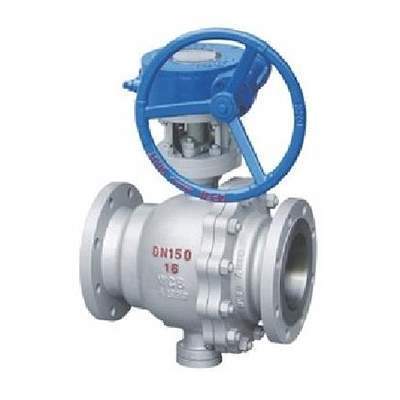Welcome to My Blog!
Before we dive into the content, if you’re interested in our products or have any questions, please feel free to visit our Contact Us page on the website. Our team is ready to assist you with inquiries, orders, or any support you may need.
Now, let’s get started on our journey together. I hope you find the content here insightful, engaging, and valuable.
Introduction

Valves play a crucial role in controlling the flow of liquids and gases in piping systems across various industries. From water treatment plants to oil and gas pipelines, valves ensure safe and efficient operation. While there are many types of valves available, two of the most commonly used are ball valves and gate valves. Understanding the differences between them is essential for selecting the right valve for your application.
Common types of valves include ball valves, gate valves, butterfly valves, and globe valves. Each has unique advantages and is suitable for specific scenarios.
Understanding Ball Valves
What Is a Ball Valve?
A ball valve is a quarter-turn valve that uses a hollow, perforated, and pivoting ball to control the flow of liquid or gas. By rotating the ball 90 degrees, the valve opens or closes, offering quick and reliable flow control.
How Ball Valves Work
Ball valves operate on a simple mechanism: the ball inside the valve has a hole through its center. When the hole aligns with the pipeline, fluid flows freely; when it rotates perpendicular to the pipeline, the flow stops. This design ensures excellent sealing performance, making ball valves ideal for high-pressure applications.
Types of Ball Valves and Their Applications
- Standard Ball Valve: Common in water, oil, and gas pipelines.
- Full Port Ball Valve: Offers minimal flow resistance, suitable for pipelines requiring maximum flow.
- Floating Ball Valve: Ball moves slightly to provide a tight seal; common in small to medium pipelines.
- Trunnion Mounted Ball Valve: Ideal for high-pressure industrial applications.
Ball valves are widely used in chemical, pharmaceutical, oil and gas, and food processing industries.
Materials Used in Ball Valves
Materials vary depending on application:
- Stainless Steel: Corrosion-resistant, ideal for harsh environments.
- Brass: Affordable, commonly used for residential plumbing.
- PVC: Lightweight and chemical-resistant, suitable for low-pressure applications.
Advantages of Ball Valves
- Quick open/close operation
- Excellent sealing performance
- Minimal leakage risk
- Durable and low maintenance
Understanding Gate Valves
What Is a Gate Valve?
A gate valve is a linear motion valve that uses a gate or wedge to block or allow flow. Unlike ball valves, gate valves are not designed for rapid operation but provide full unobstructed flow when open.
How Gate Valves Work
The gate moves up and down inside the valve body. When fully raised, the valve allows fluid to flow with minimal pressure drop. When lowered, the gate completely blocks flow.
Types of Gate Valves and Applications
- Rising Stem Gate Valve: Visual indication of open/close position; common in water systems.
- Non-Rising Stem Gate Valve: Compact design, often used in confined spaces.
- Knife Gate Valve: Designed for slurry or thick fluid pipelines.
Gate valves are commonly used in industrial water systems, wastewater treatment, oil and gas pipelines, and power plants.
Advantages and Limitations of Gate Valves
Advantages:
- Suitable for high-pressure and high-temperature applications
- Provides full flow with minimal resistance
- Reliable shutoff
Limitations:
- Slow operation compared to ball valves
- Not ideal for frequent opening and closing
- Requires more maintenance in abrasive conditions
Ball Valve vs Gate Valve: Key Differences
- Flow Control: Ball valves offer precise and quick control; gate valves are better for full open or fully closed applications.
- Operating Speed: Ball valves operate with a quarter-turn; gate valves require multiple turns.
- Pressure and Temperature: Both can handle high pressures, but trunnion-mounted ball valves are better for extreme conditions.
- Size and Installation: Gate valves can be larger and heavier; ball valves are compact and easier to install.
- Maintenance: Ball valves require minimal maintenance; gate valves need more attention, especially in slurry or abrasive environments.
How to Choose the Right Valve for Your Project
Choosing between a ball valve and a gate valve depends on several factors:
- Pressure and Temperature: For high-pressure systems, consider trunnion-mounted ball valves or robust gate valves.
- Media Type: Corrosive or abrasive media may require stainless steel ball valves or knife gate valves.
- Application Frequency: Ball valves are better for frequent operation; gate valves are suitable for less frequent use.
- Budget and Cost: Ball valves can be more expensive upfront but require less maintenance, potentially reducing long-term costs.
- Pipeline Requirements: Full flow with minimal resistance favors gate valves; quick shutoff favors ball valves.
Installation and Maintenance Tips
Proper installation and maintenance are key to ensuring the longevity of both ball and gate valves.
- Installation: Ensure valves are installed according to the manufacturer’s guidelines. Align piping to avoid stress on the valve body.
- Maintenance:
- Regularly inspect for leaks or corrosion
- Lubricate moving parts if required
- Replace worn-out seals promptly
- Common Mistakes: Over-tightening the valve, using the wrong material for the media, or neglecting periodic inspection.
Common Problems and Troubleshooting
- Leaking Valve: Check seals and seats; replace if worn.
- Valve Stuck: Remove debris and check for corrosion.
- Corrosion or Material Wear: Inspect material compatibility with fluid; upgrade if necessary.
- Signs for Replacement: Persistent leaks, damaged stem, or difficulty in operation.
Buying Guide and Suppliers

When purchasing valves, consider:
- Quality: Look for certified manufacturers with proven reliability.
- Material: Stainless steel, brass, or PVC depending on application.
- Supplier Reputation: Choose trusted industrial suppliers.
- Customization: Some applications may require custom sizes or pressure ratings.
FAQ
What is a ball valve and how does it work?
A ball valve is a quarter-turn valve that uses a hollow ball to control flow. When the ball’s hole aligns with the pipeline, fluid flows; when turned 90°, it stops the flow completely.
What are the main types of ball valves?
Common types include standard ball valves, full port ball valves, floating ball valves, and trunnion-mounted ball valves, each designed for different pressure and flow applications.
How do I choose the right ball valve for my project?
Consider pressure, temperature, media type, flow requirements, and operation frequency. Stainless steel ball valves are ideal for corrosive or high-pressure systems.
How long do ball valves typically last?
With proper installation and regular maintenance, ball valves can last 10–20 years, depending on the material and operating conditions.
Where can I buy high-quality ball valves?
You can buy ball valves online from industrial suppliers or certified manufacturers. Look for stainless steel options and check for quality certifications for reliability.
Need Help Choosing the Right Ball Valve or Gate Valve?
If you’re unsure which valve is best for your pipeline or system, our experts are ready to guide you. Contact us today for a personalized consultation, and ensure your industrial or residential system operates efficiently and safely. Don’t wait—get in touch now to make the right choice and avoid costly mistakes!
